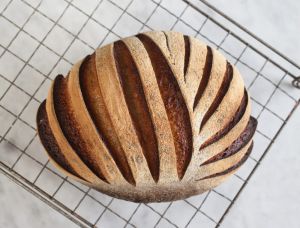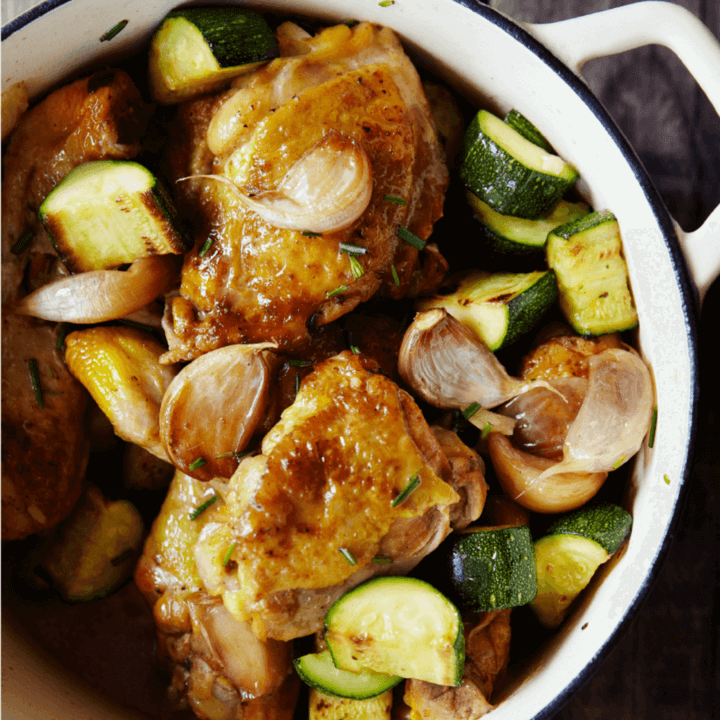
Fig & Lentil Salad from Virtually Vegan
Summer and salad go hand-in-hand and this offering from Heather Whinney’s Virtually Vegan is a fresh, sweet, figgy take on a summertime staple. Complete with a harissa

So you’ve got a little bit of time, and you’d like to make some bread. You love sourdough, but everyone talks about these mysterious ‘sourdough starters’ and you don’t have one of those.
Well, fear not! It is actually very simple to make a sourdough starter, and Chris Young, author of Slow Dough: Real Bread is here to talk you through it. All you’ll need is a bit of patience.
A plastic container with a lid is convenient for storage because if your starter gets frisky, the lid
will simply pop off, whereas a glass jar with a screwtop or metal clip seal could crack or shatter. The amount of flour you use isn’t important so we’ve started small, as instructions that tell you to throw portions of your starter away just seem wasteful. Please keep to the 1:1 ratio, though.
Daily: days one to five (ish)
30g/1oz/3½ tbsp rye flour
30g/1oz/2 tbsp water (at about 20°C/68ºF)
On each of the first five days, put equal amounts of flour and water into your container, mix, close and leave at room temperature (about 20°C/68°F) for 24 hours between each addition.
For the first few days, the mixture might seem lifeless and could smell vinegary or even a bit “off”. Don’t worry about this, as it should soon start bubbling and the smell will develop into something yeasty and maybe even floral.
Day six (ish)
Once your starter is bubbling up nicely, you can use some to bake a loaf of Real Bread. Typically, this might be anything from four to seven days after you started, but could take a little longer. If it’s not bubbling by day six, keep repeating the daily flour and water addition until it is. Don’t worry if you end up with a layer of brownish liquid. This is just gravity working its magic and is normal. Either stir it back into your starter or pour it off. If your starter hasn’t been used for a while, the second option is probably better as the liquid (sometimes known as “hooch”) will have started to become alcoholic, which can slow the starter down and may also lead to less desirable flavours in your bread.

Caring for Your Starter
• Each time you use some of the starter, simply replace with an equivalent quantity of flour and water – this is usually known as feeding or refreshing. You also need to refresh on the day before a baking session.
• When refreshing, feel free to experiment with different ratios and total amounts of flour to water: a looser starter will ferment more quickly than a stiff one; refreshing more often or adding a large refreshment will dilute the taste and acidity.
• It’s a living thing (well, technically billions of living things) so get to know it. The acidity, flavour, aromas and speed at which starters work vary, so learn what’s normal for yours.
• Give it a name. You can’t call yourself a proper sourdough nut if you don’t – though I know some people strongly disagree with me on this one!
• Forget it. Unlike other members of your household, your starter will be forgiving of neglect. Though it will be happy to help you bake bread once a week or even daily, your starter can be left untouched at the back for the refrigerator for weeks or even months. The yeast and bacteria populations will decline over time but enough will live on in a dormant state. The longer you leave it, the longer it’ll take to “wake up” though and it might need a few days of refreshments before it’s up to full vigour.
• Unless you are using your starter every single day, keep it in the fridge, which will slow it down and reduce the frequency at which you need to refresh it. You just need to remember to take it out and refresh it the day before you intend to make a loaf.
To Convert Your Starter to Wheat
Although you can use the rye starter for wheat breads, you might prefer to convert it by replacing the rye flour in refreshments with wheat flour (white or wholemeal/wholewheat) until it is all wheat. Alternatively, you can use wheat flour from the word go: again, wholemeal/wholewheat will give you a better chance of success. Whether you keep separate rye, white wheat, wholemeal/wholegrain wheat, and even other starters on the go, or just one, is up to you.

Slow Dough: Real Bread is available now as an ebook or in hardback.

Summer and salad go hand-in-hand and this offering from Heather Whinney’s Virtually Vegan is a fresh, sweet, figgy take on a summertime staple. Complete with a harissa

Too Good to Waste by Victoria Glass is THE guide to getting the very most out of your food, in the most delicious way possible! So much

Today we’re sharing a much coveted Real Bread: Slow Dough recipe – Cinnamon and Hazelnut Knots! These sweet knots are beloved all over Scandinavia, whip

We’re gearing up for the publication of French Countryside Cooking by Daniel Galmiche, coming your way on May 14th (pre-order your copy right here)! To celebrate, we’re sharing

Watkins Media Limited
Shepperton House unit 11
89 Shepperton Road
London, England
N1 3DF

Watkins Media Limited
Shepperton House unit 11
89 Shepperton Road
London, England
N1 3DF